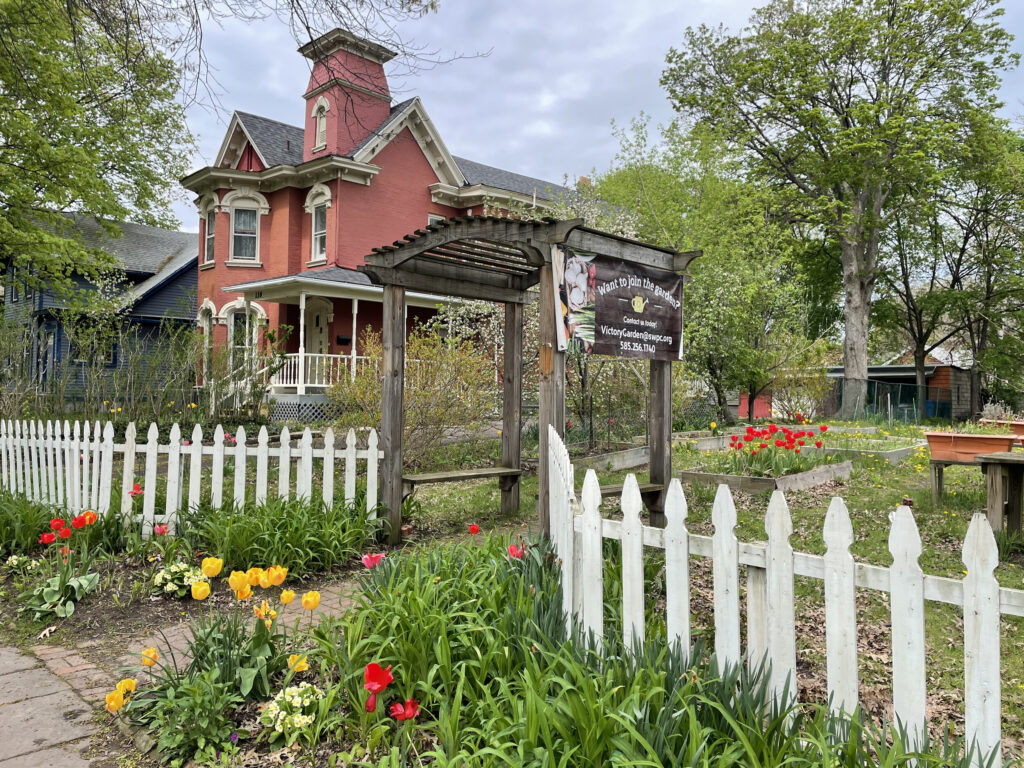
For many people, growing their own food is an achievement. But for some, gardening is beyond their reach due to barriers such as not having access to green space, a lack of resources, or inexperience. That’s where community gardens come in. A community garden is a communal space where members have their own plots but share tools, resources, and expertise. Around Rochester, community gardens are thriving.
For more than twenty years, the City of Rochester has supported an initiative to transform vacant city-owned lots into gardens. Last year, the city issued seventy-seven free permits to create or continue community gardens. As well as space to grow flowers, herbs, fruit, and other nutritious food, the gardens provide an opportunity for neighbors to get to know one another.
“The beauty of these gardens really adds to our community. It’s so important for people to get some fresh air, get their hands in the soil, and feel a sense of accomplishment,” says Glynis Valenti, the executive director of the South Wedge Planning Committee, where there are two well-established community gardens.
In Rochester, community gardens are led by volunteer coordinators. Residents can sign up for a plot, and the city provides compost, water, plant giveaways, and access to resources. One of those resources is Taproot Collective, an organization that supports urban green spaces by providing materials, knowledge, and capacity-building support.
“Community gardens connect people. It’s a venue to make friends and build relationships. Part of the value of these spaces is that people get to decide what happens in their neighborhood and in their food system,” says Nathaniel Mich, Taproot’s executive director.
The City of Rochester faces challenges in improving its food system amid long-standing concerns over food deserts, environmental justice, racial equity, and youth education. “The pandemic really forced many people and policymakers to recognize that our largely invisible food system is actually very fragile and particularly fragile for marginalized communities,” says Mich.
The city saw its biggest demand for garden permits at the height of the pandemic, and residents successfully advocated to lift restrictions so they could continue participating in community gardens. “It was garden therapy,” laughs Valenti, remembering the city’s debate over the communal spaces during COVID. “It allowed people to grow their own food and know where it came from and that it was safe to eat.”
The largest community garden in Rochester is operated by Foodlink. The Lexington Avenue Urban Farm currently supports seventy families and grows more than 6,000 pounds of produce. The garden members are primarily new Americans hailing from Southeast Asia, the Middle East, and, more recently, Ukraine. “Our community is facing language and cultural barriers, and the garden offers them an organic way of interacting,” says John Miller, Foodlink’s Community Farm Specialist.
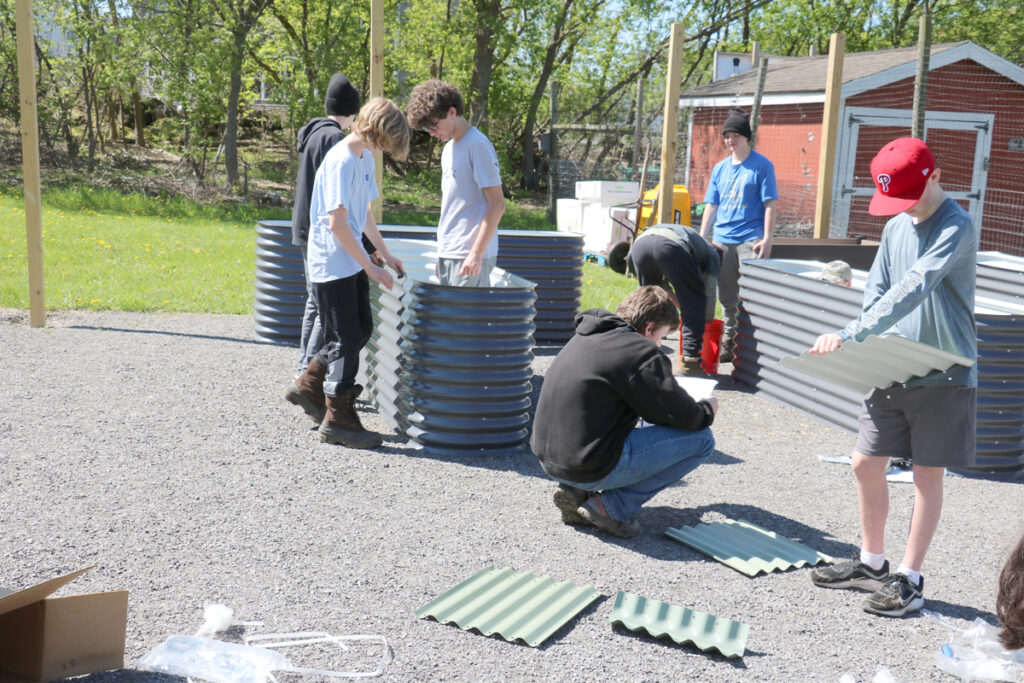
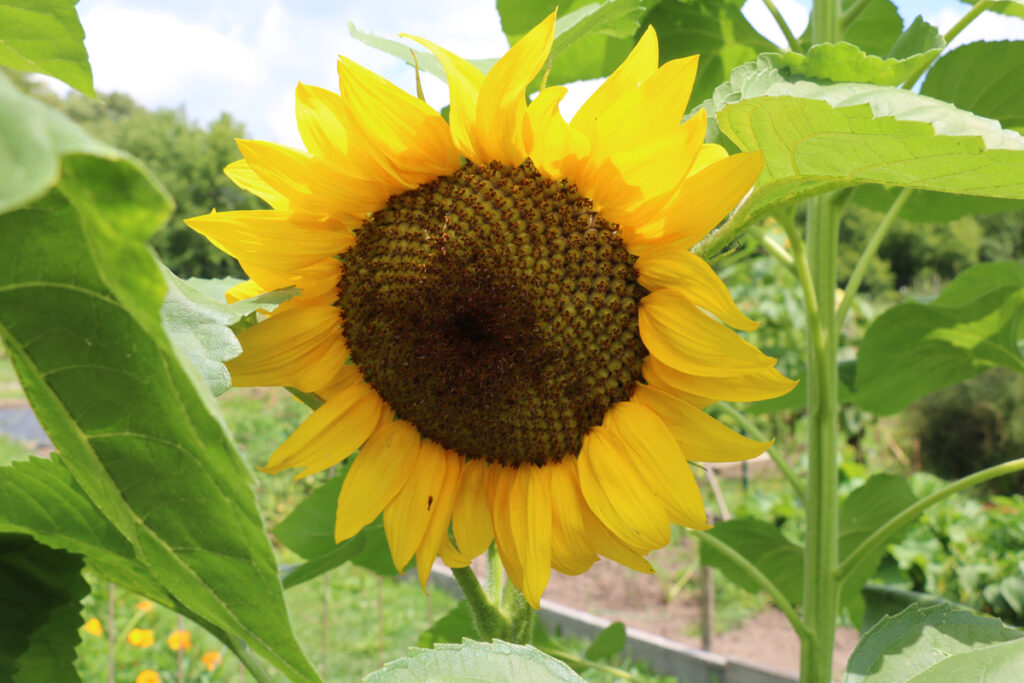

This year, Foodlink is poised to make significant investments in the Urban Farm, totaling more than $1 million. A new education center will be built adjacent to the gardens, which will expand over an additional five city lots. Foodlink will offer community health education and foster entrepreneurialism, aiming to inspire the next generation of food system advocates.
Youth education and empowerment is a goal shared by Taproot Collective. In 2024, Taproot will hire up to thirty-six income-qualified Monroe County youth for residencies at city community gardens, doubling last year’s number. The gardens identify capacity-building projects, and the youth work to complete them, learning valuable skills along the way. “We make sure they develop communication skills, financial literacy, résumé building, and leadership,” notes Mich. One-third of last year’s participants are returning to the program in leadership roles.
A community garden’s success is almost always tied to having a dedicated leader. For city gardens, these are volunteers who believe in the power of growing community through gardening. “It’s a labor of love,” says Kathy Lewis, who oversees the Hamilton Street Garden, the oldest established community garden in Rochester. Lewis, a master gardener, says she was waiting for someone else to step up, but no one did. Her expertise and work ethic made her a perfect fit for the role. She says, “It’s not a lot of work on my end; I just let people experience the joy of watching things grow.”
Often the lack of knowledge or skills deters those who may be interested in gardening but don’t know where to start. And novice gardeners aren’t restricted to living in urban settings. Suburban towns around Rochester have responded to residents’ requests for communal spaces to grow their own food and are establishing gardens on town-owned land.
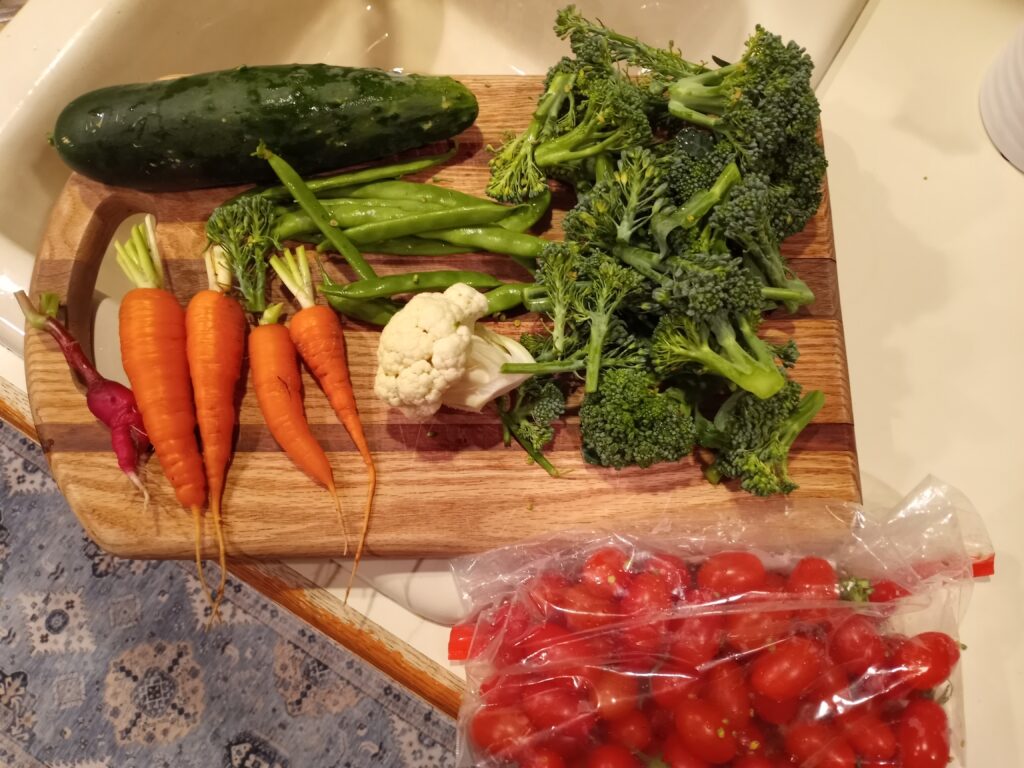
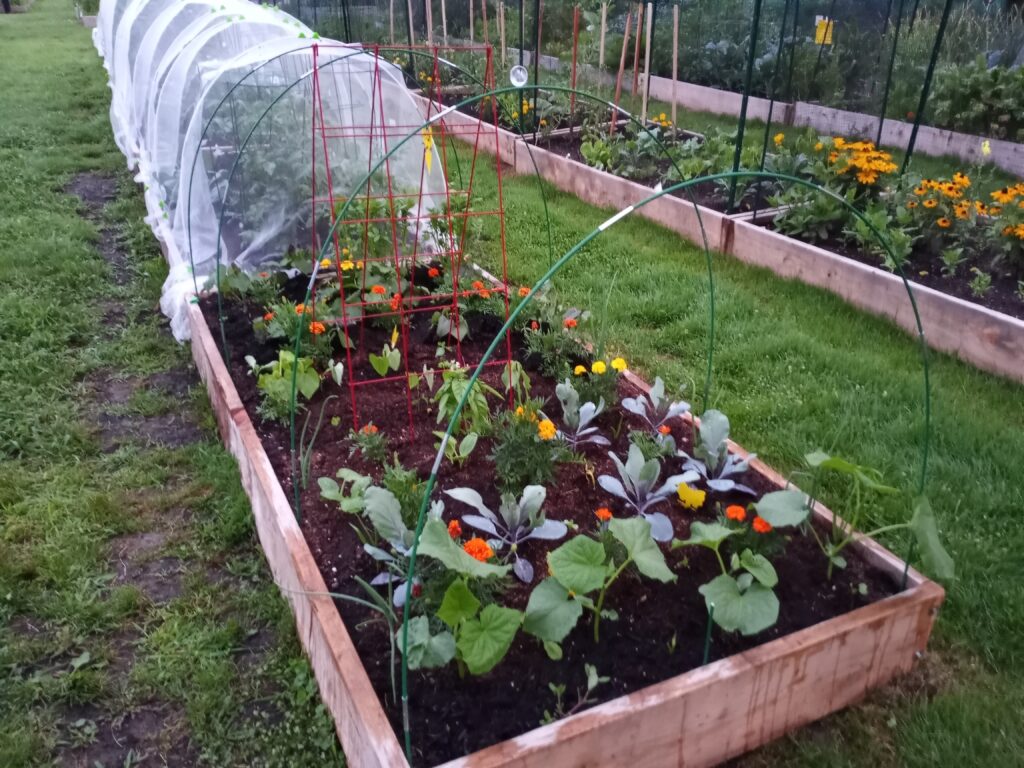
One of the longest-running suburban community gardens in the area is in Perinton. Established in 2011 in Potter Park, the garden boasts 105 raised beds and a dedicated network of garden enthusiasts. Membership is restricted to Perinton residents on a first-come, first-served basis, and there is usually a waiting list.
The town opens enrollment for beds in October every year, and roughly 75 percent of members return year after year. Bed rental fees vary based on size, and funds from bed rentals are reinvested in the garden. The town offers significant support, with a dedicated garden coordinator who communicates weekly with members and maintains communal spaces, as well as a website with a forum and resources. Compost, water, and a shared toolshed are also provided by the town. When beds change ownership, the town covers the bed with black tarps that kill weed seeds, helping the new owners start fresh.
“It’s satisfying to grow my own food. There’s nothing like the taste of homegrown produce! It’s nothing like what you find at the grocery store,” says Jan Williams, a long-time community gardener in Perinton. Jan and her sister, Cheryl, both live in condos that don’t provide a space to garden. Cheryl says, “Everyone seems happy to share their knowledge, and I’ve learned a lot over the years. Not only do people share gardening tips; they also share great recipes for using what we grow.”
Perinton garden members host events throughout the year aimed at building community, including seed swaps, school field trips, and even a vermicompost research project (i.e., worm compost). The garden has committed to a goal of donating 100 pounds of produce to the Perinton community and is working to establish beds with native plants for pollinator habitat.
In addition to Perinton, the towns of Penfield, Pittsford, Henrietta, and Brighton also have community gardens for residents. Homesteads for Hope, a nonprofit teaching farm in Spencerport, offers garden plots for anyone, and RIT has an on-campus community garden open to RIT students and faculty and senior citizens.
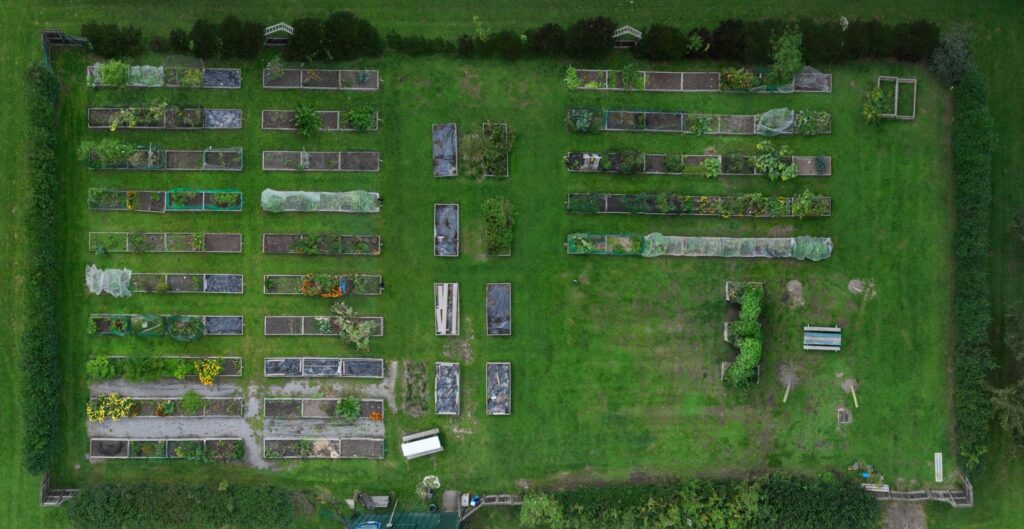
Town-owned community gardens offer many benefits, but there are restrictions to what members can grow. Nearly all gardens limit pesticides and insecticides and promote organic-only methods. In many, perennial herbs such as mint are not permitted.
Some community gardens assign beds in the spring, limiting the ability for residents to plant crops that need to overwinter, such as garlic and tulips. All members are required to maintain their beds during the growing season and clean up their plots each fall. Some towns offer on-site composting of plant waste while others require members to take their waste with them.
Community gardens offer opportunities for both novice and experienced gardeners to connect and build relationships. The earliest community gardens in America were Victory Gardens promoted by the U.S. government during World War I as a way of minimizing food shortages and boosting morale.
During the first World War, five million Victory Gardens were established. By the end of World War II, that number swelled to 18 million. The success of these gardens not only provided food for American families but empowered residents and created communities. In today’s divided and highly individualistic world, connecting people through the simple act of growing food together may be just what we need.
If you are interested in becoming a member of a community garden, contact your local town recreation department. If you live in Rochester, connect with the City of Rochester Bureau of Recreation. Beds are usually available for new members during the fall or winter, so keep an eye out for sign-ups from October through December.
Many community gardens offer mentoring support, so don’t let a lack of knowledge dissuade you from pursuing your gardening dreams. And if you’re on the fence, make time this summer to visit a community garden near you, talk to its members, and see if it’s right fit for you.
This article originally appeared in the May/June 2024 issue of (585).
Views: 11






